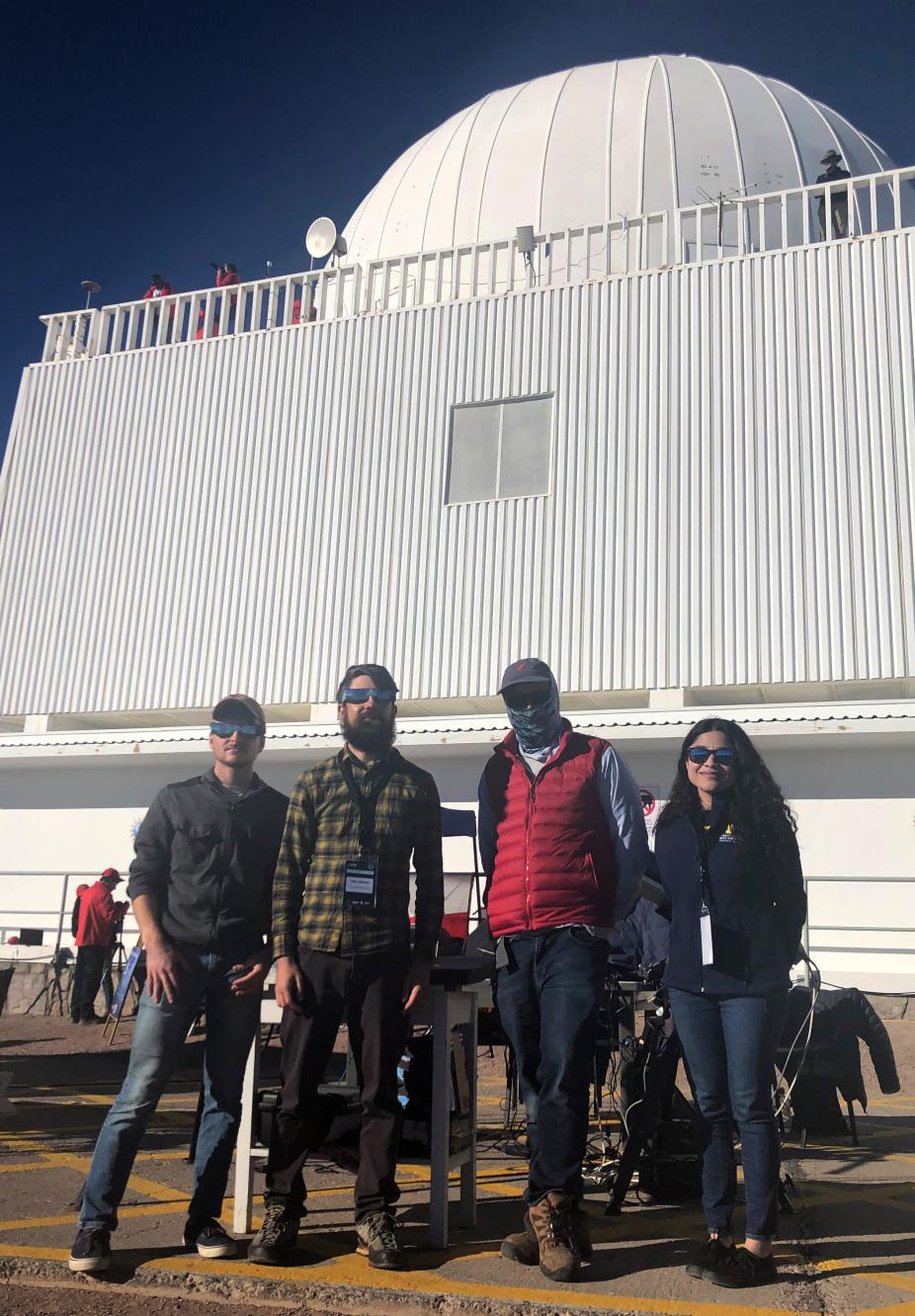
Solar Eclipse Team, Chile, 2019.
Paul Bryans tells Sun Superheroes that a solar eclipse is an opportunity to understand and study the Sun's magnetism. During a solar eclipse, when the moon blocks the Sun, it allows scientists to study the strength and shape of the Sun's surrounding magnetic field. The Sun's energy is completely magnetic and the more we understand its magnetism, the better we can predict coronal mass ejections, flares, and other explosive events that can impact the Earth's electric grid.
Paul explains that as a child he had no plans to become a Sun scientist. In highschool he enjoyed math and science and while studying physics in college he was offered a summer internship at a government Solar Physics lab in England. That experience sparked his interest and he has been studying the Sun ever since. Paul encourages everyone to make an effort to personally witness a total eclipse at least once in their lifetime. Experiencing a total eclipse is special, Paul says, when your surroundings become dark, then cold, and the stars appear in the middle of the day. The next total eclipse in the United States will be in 2024.
Sun SuperHeroes interviewed Dr. Paul Bryans of the High Altitude Observatory about his recent excursion to the Cerro Tololo Inter American Observatory in Chile to observe a total solar eclipse.
BACSMediaLab